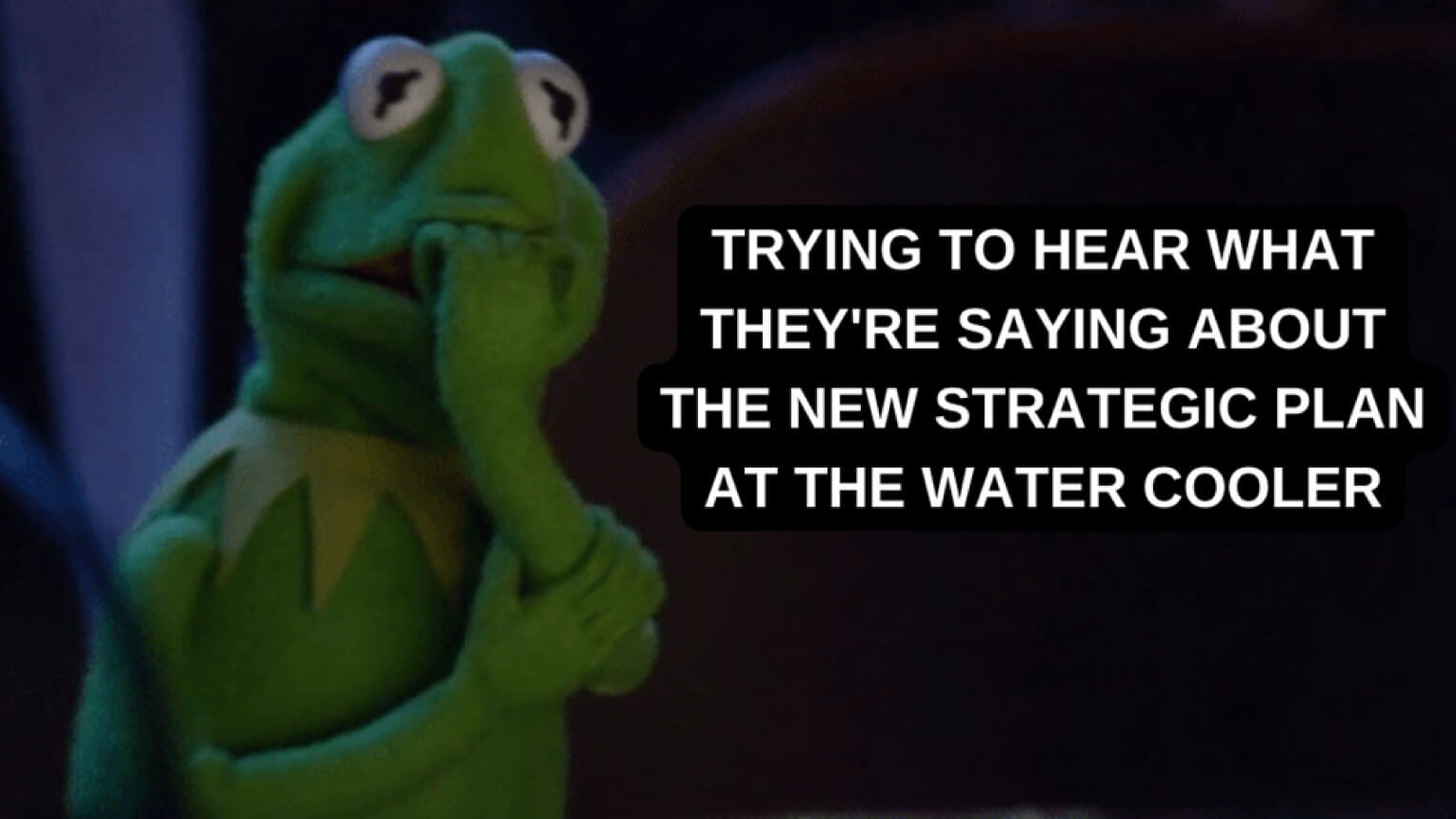Understanding why strategies fail – how to avoid the pitfalls that hold up progress
You did it! You survived weeks-long planning meetings and have all your research, insights and plans beautifully captured in a 150 slide deck. Hooray! This thing is so good. Surely your team(s) will start implementing it right away. Right?
Sadly, no.

Imagine you’ve decided to go for a weekend drive to the countryside. To get to your destination, you’ll need to know what’s in and what’s out for your drive (scope), have some kind of idea of how you’re going to get there (a roadmap), who’s joining you, who’s driving, and most importantly, who’s bringing snacks (resources). You also have work on Monday and don’t get paid until the following Friday, so you’ll need a decent estimate of time and cost before you leave home. It also helps if you have some ideas about what will happen if roadblocks or other delays impede your course (contingency plan).
The sad news is, most businesses are still doing strategic planning like a bad road trip. No map, no plans, no group text to coordinate on the fly. Is it a surprise then that 60-90% of strategic plans never get fully implemented?*
Strategies cannot be pushed ONTO people. They have to be pulled (understood, accepted, promoted) BY people. Sure, you can tell your team to “go do these things” and cross your fingers that everyone falls in line to execute the new strategy perfectly. Don’t be surprised if all you hear is crickets!
Unveiling your grand strategic plan in an all-hands meeting or an email from the CEO isn’t enough. The biggest failure we’ve seen in our consulting work is assuming employees will just snap to a new plan once they hear it. That’s not how humans are wired. We are inherently skeptical and need to not only hear new information multiple times, but be convinced that it’s correct, and in our interest, in order to start changing our behavior.

When it comes to big market transitions (think: gas powered to electric vehicles, clunky enterprise software to software as a service), your job is not just to know what new direction to take. Thinking 5-+years ahead is a basic prerequisite of being a good executive. The thing that makes good executives great? Helping people understand the vision – where we are going and the purpose -why the company should change, and then getting people excited about going on the journey with you.
A good sign that your strategy is taking off is when strategic discussions start growing on their own. People start exploring ideas to support the new direction, they start talking about it with each other when you’re not around. That’s a clear indication that your people have not only understood the new direction but are fully bought in and are using their own creativity and expertise to get there. When you’re doing most of the explaining and convincing, assume you’re in trouble.
What can you do?
1. The “Ikea Effect” – People tend to become more attached to what they help create. That’s why people want to post their lovingly assembled 7-year-old MALM bed frame on Craigslist for close to its original retail value. How does this translate to strategic planning? Make sure key executives, influences, and dissenters have been involved in the strategy creation process. If not, your plans won’t survive first contact.
2. Have a strong communication plan – An effective communication plan creates multiple touch points so that you can move employees from hearing the new direction to believing it’s sound, and eventually living it and shifting their behaviors.
3. Change Management – People may talk a lot about “loving fast pace” and “getting bored too easily.” But at the end of the day, as humans, we are hardwired to resist change. When you’re asking an employee who’s been successfully doing their job the same way for years to suddenly show up differently, make sure you’re addressing their deeply human and predictable concerns:
- What’s in it for me?
- What things do I still have control over?
- Why is this better than the way I’ve always done it?
- What kind of support am I going to get along the way?
4. Consider the day-to-day activities – A new strategy will fail if it’s not linked to your existing core processes in a meaningful way.* Your company has ongoing operational activities that keep things running. Now you’re asking people to carve out time for strategic planning and implementation. And they still need to do everything else that was already on their plate. A strategy designed without considering your operating context and the resources needed to keep the trains running on time is doomed to fail. Your strategy is not a new wheel, reinvented; it’s more like the central axle that allows business to continue humming down the road uninterrupted.
5. Gather feedback – You need to keep your ear to the ground to measure whether the strategy is right, or whether communications are effective. Utilize feedback to refine the strategy. Lose your ego and ditch the “sunk cost” mentality. Be ready to pivot and respond to what you’re learning from your employees.
*Sources:
4 Common Reasons Strategies Fail – HBR Jun 2022
7 Reasons Why Strategic Plans Fail (and how you can avoid them) – Tempo
 Ready to Talk Now?
Ready to Talk Now?